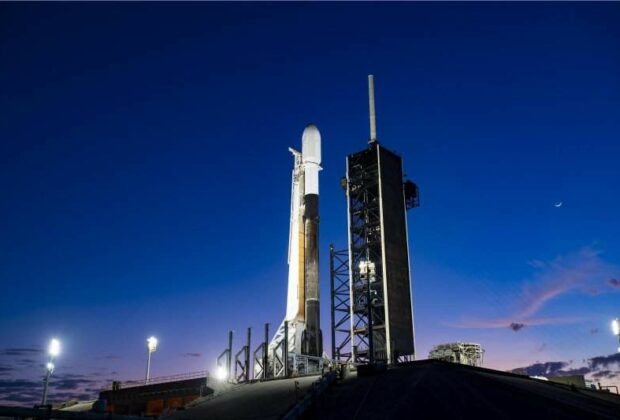Intuitive Machines, a private aerospace business, constructed a robotic lunar lander that SpaceX successfully launched on Thursday with the goal of becoming the first American spacecraft to land on the Moon since the Apollo 17 mission in 1972. On February 15th, at 1:05 AM ET, a SpaceX Falcon 9 rocket lifted the “Odysseus” Nova-C lander into orbit from Cape Canaveral.
The launch was originally slated for Wednesday, but it was postponed because of worries over the methane fuel’s temperature within the rocket. Soon after takeoff, SpaceX verified that the first stage of the Falcon 9 rocket that sent the IM-1 mission’s Odysseus lander into space had likewise successfully landed back at Cape Canaveral. Odysseus is currently travelling towards the south pole of the Moon, which is a location of special scientific interest since it contains water ice. On February 22nd, Odysseus is predicted to land there.
The NASA-described Nova-C spacecraft is a “hexagonal cylinder” on six landing legs, measuring four metres (about fourteen feet) in height and 1.57 metres (five feet) in width. Its launch mass is 1,908 kilogrammes (4,206 pounds). As Odysseus wasn’t built to endure such a prolonged period of extreme cold, Intuitive Machines anticipates that the lander will be operational for 14 Earth days, at which point the lunar night will probably compel it to shut down.
In addition to being the first privately owned spacecraft to land on the moon in over 50 years, a successful landing for Odysseus would also represent a US return to the moon. Another candidate for this accomplishment was the Astrobotic Peregrine lander, which United Launch Alliance launched last month. However, a problem with the lander’s propulsion system prevented it from reaching the Moon. Similar failures occurred last April with Japan’s private Hakuto-R mission when contact was lost just before the lander was scheduled to settle on the Moon and with Israel’s Beresheet lander that crashed in 2019.
Similar to Peregrine, the IM-1 mission is carrying a number of science and research payloads for NASA’s Commercial Lunar Payload Services (CLPS) programme. These payloads include an LN-1 radio navigation beacon, which could provide accurate geolocation information for landers, rovers, and astronauts, and a Laser Retro-Reflector Array (LRA) to aid in future spacecraft’s precision landings. These tools are intended to gather important information on the lunar surface in advance of NASA’s Artemis programme, which aims to bring people back to the Moon in 2019.
Odysseus is also transporting payloads for other clients, such as the “EagleCam” CubeSat camera system, which is intended to analyse dust plumes and was constructed by students at Embry-Riddle Aeronautical University in Daytona Beach, Florida. Additionally on board is Jeff Koons’ art piece, Moon Phases, which consists of 125 tiny sculptures of the Moon. According to the artist, this will be the “first authorised artwork on the Moon.”
Even if the launch was successful, Odysseus still needs to get beyond the obstacle of landing in one of the most challenging areas of the moon. The south pole of the moon is always under shadow, which is excellent for ice but not so good for lander navigation. In August of last year, India became the fourth country to accomplish a soft landing close to the area.








